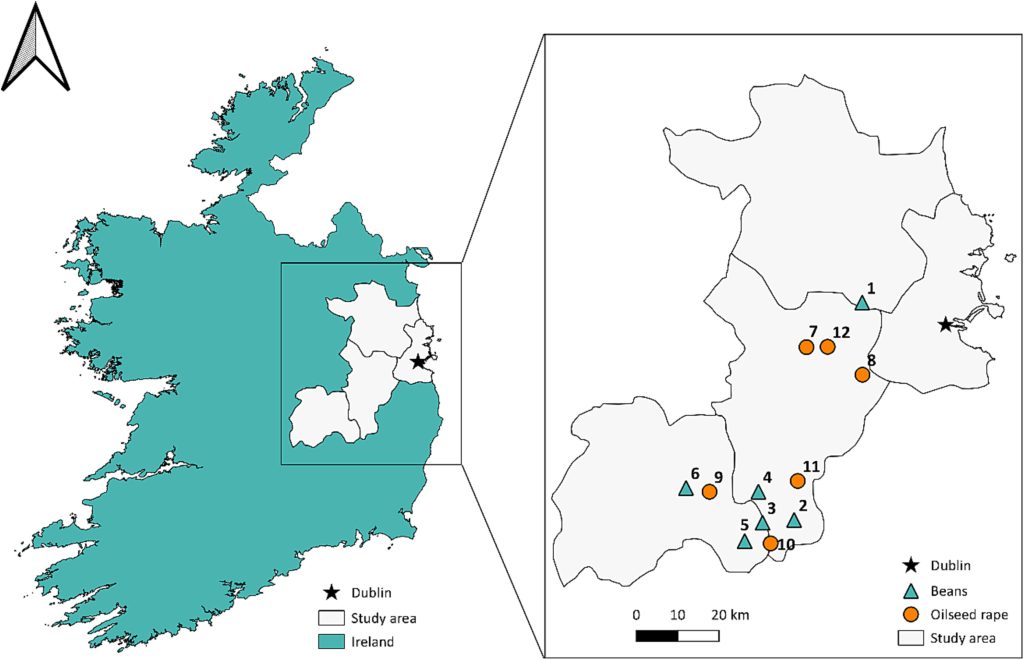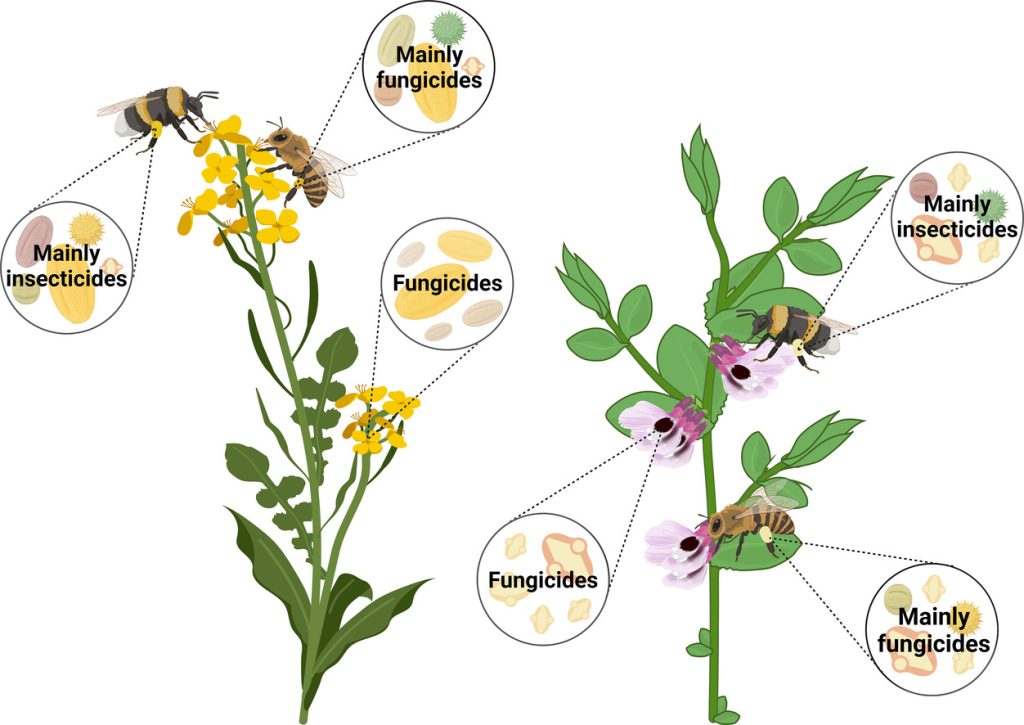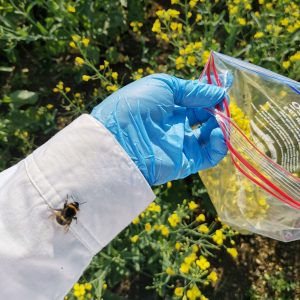By Dr Elena Zioga, Trinity College Dublin
This blog is part of the ‘Dispatches from Researchers’ series, which features guest articles written by experts in pollination and related fields.
Our study
In a modern agricultural environment, where agrochemicals are usually applied, bees can be exposed to a wide range of pesticides in a variety of manners. The way in which bees will be affected by pesticides depends on the concentrations they encounter, and for how long they are exposed to them. Both honey bees and bumblebees are important pollinators for multiple agricultural crops and wildflowers, but they have different characteristics and lifestyles. Could this mean that their exposure to pesticides, and therefore the pesticide effect on each bee species, may also differ?
In 2020, a study carried out in Ireland, assessed if honey bees and bumblebees are exposed differently to pesticides through pollen, and identified the source of this pesticide contamination. To compare the extent and diversity of pesticide contamination, pollen was simultaneously sampled from crop flowers (oilseed rape or broad bean), as well as honey bee and bumble bee pollen loads foraging on those crops from 12 different fields in Southeast Ireland.

Key findings
- Most pesticides detected had not been applied recently to the sampled fields. This reveals two things about the pesticide origin. On one hand, it may show that some pesticide chemicals may stay for a long time in the soil, subsequently ending up in crop pollen and then get picked up by the bees. On the other hand, and specifically for the case of bee-collected pollen, it may indicate that pesticide residues may have come from plants exposed to pesticides in other places, but within the foraging range of bees.
- Crop pollen was only contaminated with fungicides, honey bee pollen was mostly contaminated with fungicides, while bumblebee pollen had mostly residues of neonicotinoid insecticides. Thus, even though both honey and bumble bees were foraging on the oilseed rape and bean crops, the pesticide types detected in their pollen had compounds that were not found in pollen of the evaluated crops. This implies that bees picked them up from other plants that may have been either crops from nearby fields or wildflowers.

-
Even though neonicotinoid insecticides had not been applied recently to the sampled fields, all five chemicals assessed were simultaneously found only in bumble bee pollen, which also scored the highest number of compounds overall, and the most pesticide detections. This clearly shows that bumblebees are exposed differently to pesticides than honey bees through their pollen. This makes bumble bees more vulnerable to neonicotinoids, some of which may be highly toxic for bumblebee individuals and their colonies.
-
Analysis of pollen grains from the honey bees and bumblebees showed that neonicotinoid detection increased when the presence of wild plants in bumble bee pollen increased. This relationship was not observed for honey bees and that is one of many things that require further investigation.

-
The outcomes of this study are worrisome for various reasons. The findings highlight the likelihood of widespread exposure to a variety of pesticides from different pesticide groups (fungicides and insecticides). Combined exposure to these two pesticide categories can be even more harmful than exposure to each separately.
-
Especially noteworthy, is the indication that honey bees and bumblebees appear to encounter pesticides in different ways. In essence, this implies that relying solely on honey bees as a benchmark to understand pesticide exposure across all bee species doesn’t provide a comprehensive perspective. What applies to honey bees doesn’t necessarily apply to bumblebees and other wild bees, and all bee species are crucial and necessary for pollination services and ecosystem health.

Dr Elena Zioga, Trinity College Dublin, Dublin, Ireland
Read more:
Zioga E, White B, Stout J, 2023. Honey bees and bumble bees may be exposed to pesticides differently when foraging on agricultural areas. Science of The Total Environment 896, 166214. https://doi.org/10.1016/j.scitotenv.2023.166214.
